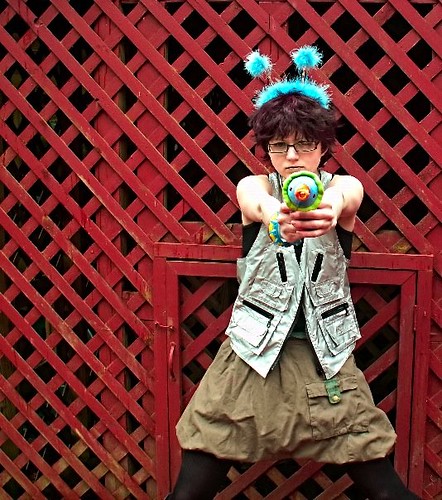4 common reasons for temper tantrums
1] Tension outlet. The child becomes like a pressure cooker and it does not have a more sophisticated way of releasing that tension.
2] Manipulation or intimidation to get something or assume the powerful position in the relationship with mother. This can be particularly so if the child has a tendency to throw a temper tantrum in public, like in a supermarket.
3] Temper tantrums are dramatic displays of emotion especially when done in public view. So they can represent the precursors for the development of the ‘drama queen’ personality types such as the hysteric, narcissistic or borderline personality types.

Tantrums? Not this good girl.
4] The child is learning about anger and assertion. Temper tantrums can be a crude expression of these feelings. Most people as the grow learn about their feelings of anger, how to manage them and how to express them in a socially acceptable way. The first thing a child must learn is to focus its anger at the source of frustration or the stimuli of the anger. This is shown in the two diagrams below.

The first shows temper tantrum anger. It is directionless and thus goes in all directions including being directed at self. The child angrily lashes out and will hit those around himself as well as himself. When working with the child one seeks to get the child to identify the source of its frustration. Who or what lead to the angry response? It maybe mummy saying “No”, a sibling getting the last piece of cake, having to go to school, not being able to tie its shoe laces and so forth.
One needs to assist the child to achieve the cognitive task of understanding what caused its frustration. Once done the child can learn to direct its anger at the source as the diagram shows. Then to show the anger at that ‘thing’ in a socially acceptable way.

Responses parents can have to children who are engaging in a tantrum:
The primary problem with a temper tantrum is the lack of control by the child such that they can physically hurt self. If a child is in a hysterical state the parent needs to assess if it’s in danger of hurting self. If it is, then the parent must adopt the first strategy of restraining the child. If the child is not in any danger of hurting self then the parents can adopt strategy 1 or 2. If there is more thinking ability in the child then parents can adopt strategies 3, 4 & 5. The response can also be sequential. Do 1 & 2 first and when the child calms one can do options 3, 4 or 5.

Directing anger
1. Hold or restrain the child physically. Dabbing a wet cloth on the face can also defuse the anger
2. Ignore it. If possible it is best to give the behaviour as little attention (strokes) as possible
3. Distract the child
4. Isolate the child (Time out)
5. Compromise.
Tantrums in adulthood
Sometimes people never properly learn how to have directional anger and thus can have tantrum like anger as they grow into adolescence and adulthood. As I mentioned before this can happen in the emotionally labile and acting out type of personalities such as the hysteric, borderline, narcissistic and maybe the anti social personality type as well.
The problem is with an adult having a tantrum is the circumstances are very different. Compare the young child to a fully grown man who is six foot tall, solidly built having a temper tantrum. The potential danger increases significantly and this could explain some types of domestic violence. However the problems do not end there a fully grown adult also has far more ability to plan and is much more capable of using weapons. So the tantrums can be much more physically violent.
This may explain those situations one hears about from time to time when a disgruntled individual walks into a place where many others are and simply starts shooting people and eventually ends up killing self. We hear of teenagers going into high schools doing such things. These situations do have the directionless expression of anger quality that one finds in a tantrum and thus could be an adult display of a temper tantrum.
Graffiti
Hi Tony,
ReplyDeleteLuckily my kids haven't given many performances of TT, yet the younger guy is young enough to show the best of his in the future.
I think what helps is I am always cool as cucumber on such occasions, you'd say English phlegm jailed in a Slavic body :)
I am in the middle of "The Science of Parenting" by Margot Sunderland and she makes a clear distinction between crying in despair of being separated etc., and what she calls "little Nero outburst" (I am back-translating into English so maybe it was called different in the original). Anyway, I think we agree your entry covers the latter case.
best regards,
Oh, and another : I thought you Aussies think in meters, not in feet?
ReplyDeleteGood to hear Zbig that yours are not doing a lot of TTs. And I agree the 'cool' parent is likely to do a better job.
ReplyDeleteWe are metric in this part of the world as you note. The term, "6 foot tall" has come to mean just a big person, here in OZ.
Tony
I was able to find good advice from your content.
ReplyDeletemy website :: lanautica
You're so awesome! I do not believe I've read a single thing like this before.
ReplyDeleteSo wonderful to find someone with a few genuine thoughts on this issue.
Seriously.. thanks for starting this up. This site
is one thing that is required on the internet, someone with a bit
of originality!
Review my blog :: electrician katy tx.